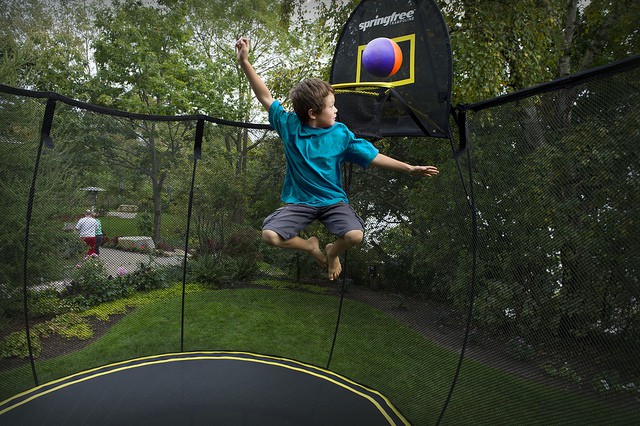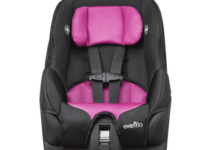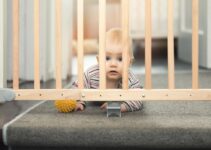Trampolines have been a backyard staple for decades, providing entertainment for generations of children.
While most kids find the springy shenanigans irresistible, parents and guardians may be a bit hesitant to let their kids join in the fun.
Whether you’re considering purchasing a trampoline or you’re just concerned about safety while your children visit other homes with trampolines, it is essential to understand safe usage.
The risks associated with home trampolines are many.
Serious trampoline injuries usually involve the head and neck, and the most common injuries are sprains and fractures of the arm and collarbone. It is not uncommon to see abrasions or lacerations in cases where trampoline users bounce off of the fabric and onto surrounding objects or surfaces, including other parts of the trampoline itself. Likewise, improper usage can result in injuries from jumpers colliding with each other.
The U.S. Consumer Product Safety Commission reports that “in 2012 there were 94,900 hospital emergency room-treated injuries associated with trampolines.”
Fortunately, trampoline manufacturers have implemented some safety measures and guidelines which can reduce the risk of injury. When purchasing a trampoline, always follow manufacturer instructions for use and assembly for the safest result.
Along with the specific manufacturer instructions, there are general safety practices that are essential for safe trampoline use. While these measures decrease the risk of injury, there will always be risks with trampoline use.
Here are some ways to stay as safe as possible when using a trampoline:
Table of Contents
Follow The Placement and Assembly Guidelines
As mentioned above, proper assembly according to manufacturer instructions is of utmost importance.
The placement of the trampoline is also correlated with less risk.
Be sure your trampoline is on level, energy-absorbing ground such as a soft lawn or wood chip mulch.
Place your trampoline away from trees and structures. In the unexpected event that a jumper falls from the trampoline, there will be no objects to meet on the way to the soft ground.
Use Safety Nets
An enclosure protects errant jumpers from falling off of the trampoline, and many popular manufacturers such as Springfree and Skywalker include this essential safety feature with their products. It’s an important part of the safest trampolines.
Always test the sturdiness of the safety net upon installation and check all points which could come unfastened and allow a jumper to slip through.
Cover Surrounding Hard Surfaces
Use padding to cover the surrounding landing surfaces. Make sure the trampoline springs and frame are covered as well. Many injuries are the result of falling onto the springs or frame of unpadded trampolines.
Supervise
Do not allow children to use trampolines unsupervised.
Not all accidents can be prevented, but many can with adult supervision ensuring that all safety rules are followed.
To prevent unsupervised jumping, remove the ladder that allows access for smaller children.
Set Rules
Be sure that any and all children who may use your trampoline understand the rules.
Three general rules should apply, in addition to any specific safety concerns you may have with your particular trampoline.
-Trampolines are not suitable for children under six years of age, as they do not have the necessary body control for this activity.
-One jumper at a time. The American Academy of Pediatrics found that 75 percent of injuries occur when multiple people are jumping.
-No risky moves, including somersaults.
Ensure Proper Maintenance
Set a regular schedule to assess your trampoline’s safety.
Check the fabric for tears and compromised areas.
Be sure that all springs are attached properly.
Tighten safety equipment such as netting and pads.
Assure that the trampoline remains level and the surrounding areas clear.
If you discover any areas which need attention, address those before allowing children to use the trampoline.
Another concern for trampoline owners is high wind. Even when no one is using a trampoline, it can be dangerous. High winds have lifted trampolines into the air and moved them significant distances, putting people and property at risk. If you are in an area which regularly experiences this type of weather, it is important to either tie down or pack down the trampoline.
Now You Are Ready to Enjoy The Fun
While there are inherent risks in owning and using trampolines, they can still bring a great deal of outdoor fun to children and adults who are conscious of safety and proper usage. They are also great for getting exercise. The most important part of trampoline ownership is diligence in following safety measures to protect all users.








